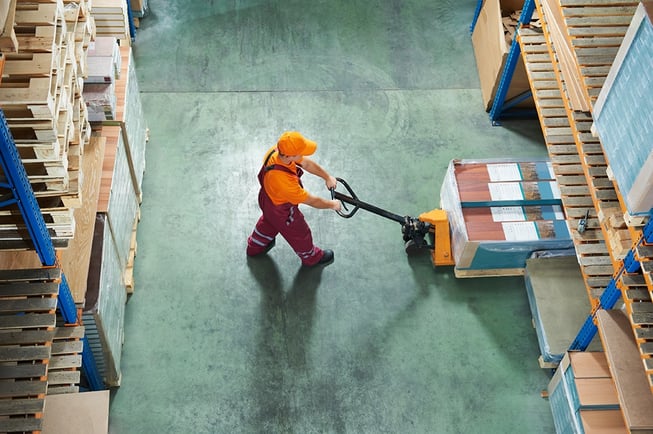
Companies striving to ensure a safe working environment for their employees typically invest in a range of protective mechanisms that safeguard both infrastructure and people. While costs of such initiatives need a watchful eye, it is equally important for the investment to be fully justified. The safety measures, systems, solutions and equipment must serve the purpose and a lone worker setup is no exception.
Ensuring safety of lone workers can get challenging, for these people work alone with literally no one around and completely depend on the work setting, which includes automated systems, machinery, deserted settings, empty buildings, etc. Any threats in such situations generally lead to a lot of stress, requiring prompt responses from both the worker and the rescue team, which can happen only when lone worker systems are used in the right and timely manner.
How to Ensure Better Use of Lone Worker Setups?
Though easier said than done, it is essential to:
- Understand the different solutions available
- Choose the right lone worker system for the job
- Systematically train employees on how to use the solution
Different Types of Lone Worker Systems
From simple alarms to scheduled status checks, all types of lone worker safety solutions rely on establishing communication with the worker while on the job. While installing alarms help lone workers draw prompt attention when there is an emergency, regular pre-scheduled phone calls serve to ensure there are no reasons for concern. Central surveillance or CCTV monitoring systems do work well in select work environments, while getting employees to work in pairs often tend to boost their confidence. Alarms seem to prove more effective as they are real-time, get noticed almost instantly, and can save lives during critical situations.
Alarms can either be simple panic buttons, or bundled with GPS tracking, motion sensors or voice communication. These advanced features enable rescue teams to get a hang of the problem, prepare accordingly, and quickly reach ground zero to aid the affected worker. The pre-alarm feature in these systems alerts the receiver before the actual alarm. This eliminates the possibility of false alarms and makes sure that people are responding to a genuine problem. Options thus are aplenty when it comes to lone worker alarm systems. Some of them may require mobile coverage though and may not be useful for lone workers on remote sites. While all these safety systems by themselves are effective, companies must make sure that employees are trained well enough to respond promptly to distress calls, for the process to be successful.
Which is The Right Lone Worker System?
Deciding on the right lone worker system is no great task. The key point to remember is that the system must be usable and relevant for a specific work setting. It must appeal to the end user, in this case, the lone worker. With technology advancements, hi-end feature-rich safety solutions flood the marketplace, and these are priced quite high as well. While it may be quite tempting to invest in cutting-edge technology, it is important to consider if you really need to. After all, you don’t want your lone worker to lose precious time running through an array of options to simply call for help!
Make sure you settle for a suitable, user-friendly system that best meets the requirements of the work environment and employees. Your employees must be able to appreciate the benefits of the system and learn to use it in the right manner. Note that the right lone worker system tends to instil a sense of security in the employees, assuring them that help is just a call/click away and encouraging them to use it when in need.
Lone Worker Systems Don’t Work Alone
The employer’s responsibility doesn’t just stop with providing lone worker safety solutions. Employee buy-in is a must to build a robust protection system. It is important to thoroughly research and understand the risks lone workers are prone to when working in a specific work environment. The impact of such risks increase manifold as the worker is alone and can easily panic or collapse even if the real problem is a small one. Furthermore, the health conditions of lone workers may also add to existing complications, thus worsening the situation.
It is, therefore, important for the company to gain the trust and confidence of its employees by keeping them informed about:
- potential risks on the job that they need to watch out for or avoid
- specific health conditions or requirements for the position
- emergency alert procedures and alternate plans
- rescue/response procedures and time-frames
- any illness or other concerns to be reported
Educating employees about the safety procedures in place, what they are expected to do when faced with different types of emergencies, and training them on how exactly to tackle such situations often prove quite valuable in real time. From managers and team leaders to people who are responsible for responding to the alarm/alert must be fully aware of what they must do when there is a call for help. In short, employees (both lone workers and others involved in the safety protocol) must know how they should handle a given situation. Getting employees to realise the real dangers at the workplace and the effectiveness of the safety measures and solutions adopted will ensure that they voluntarily participate in safety training process.
Tracking the usage and effectiveness of the lone worker system is a must to determine its usefulness. It is also important to keep note of the changes in the working environment, addition of new lone worker jobs or employees to extend the safety net as required.
With Health and Safety regulation violations having been heavily fined in the recent past, it is important for employers to try out different lone worker safety solutions and implement the right one to enhance the safety of lone workers employed with them and reduce any harm that may arise from known risks related to a given job.





